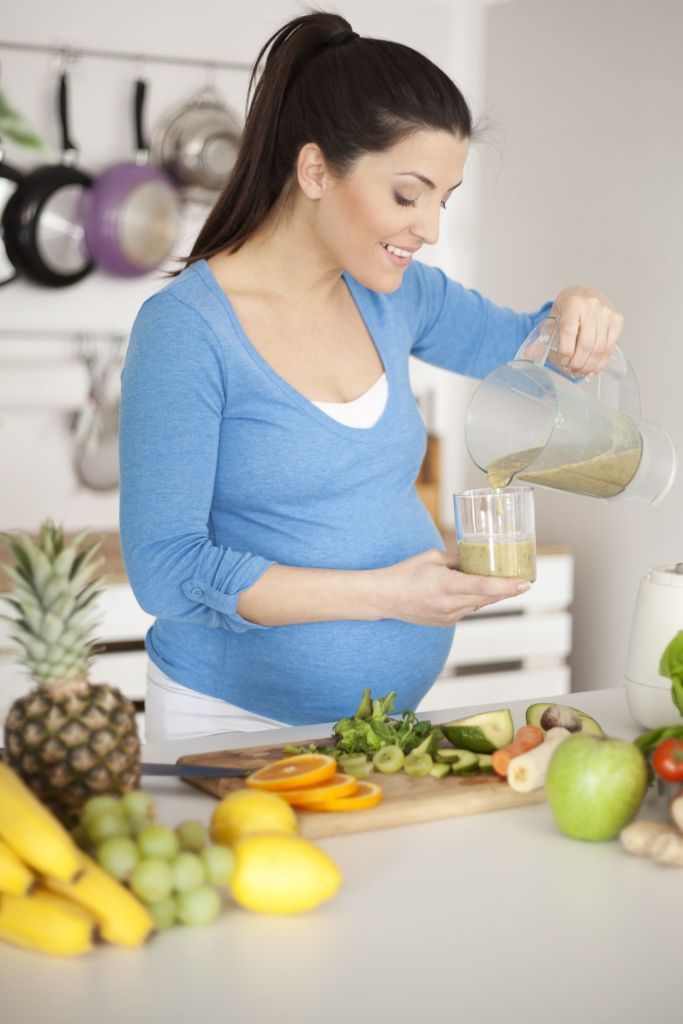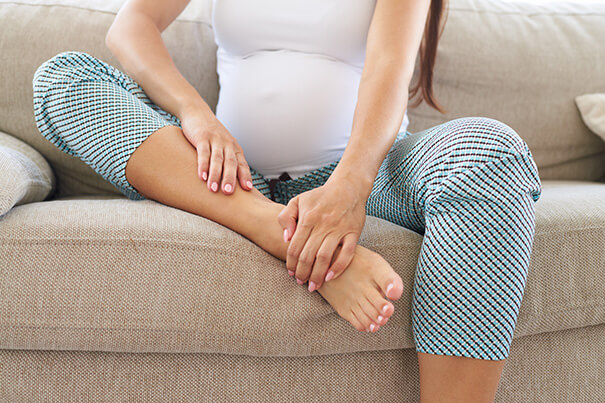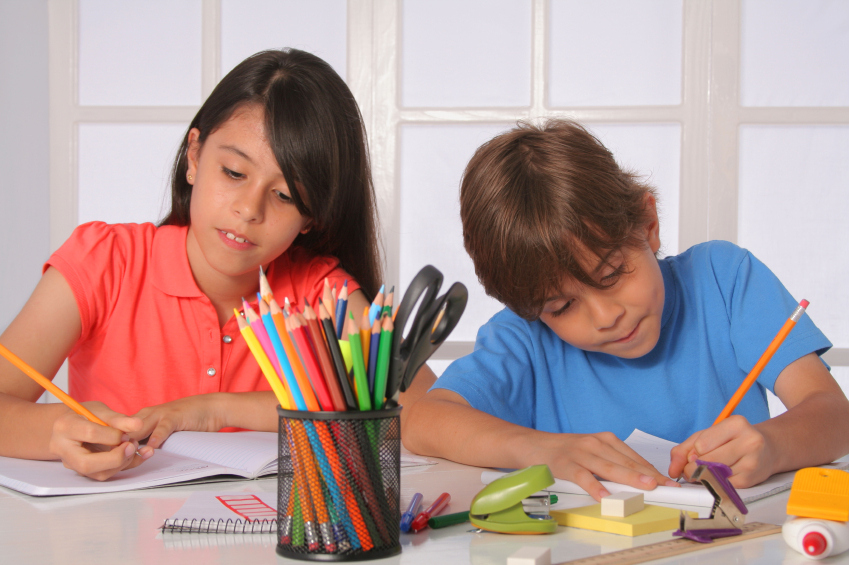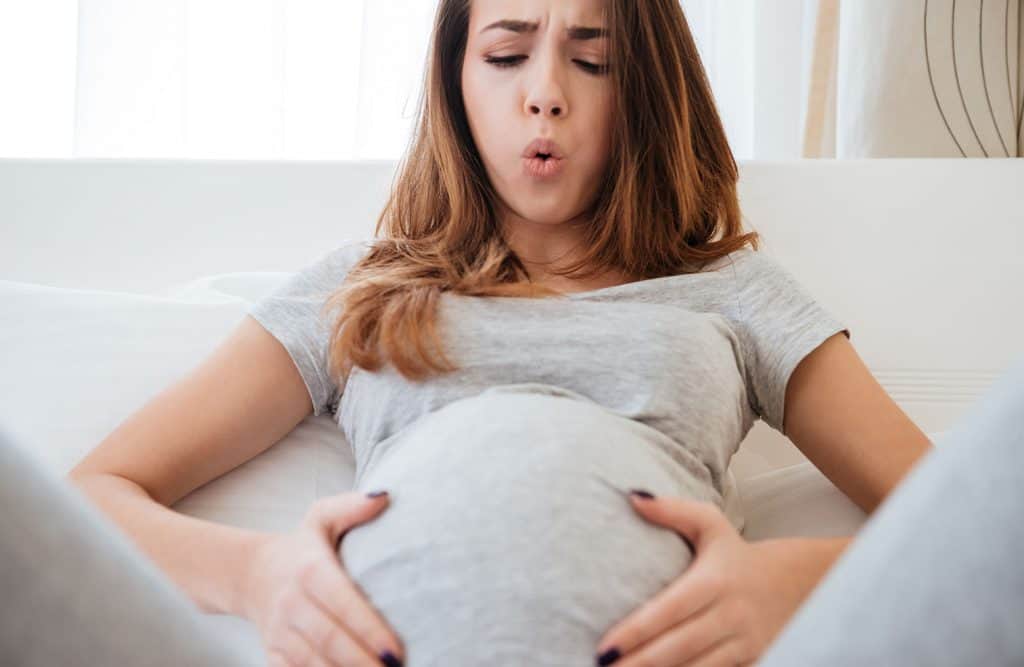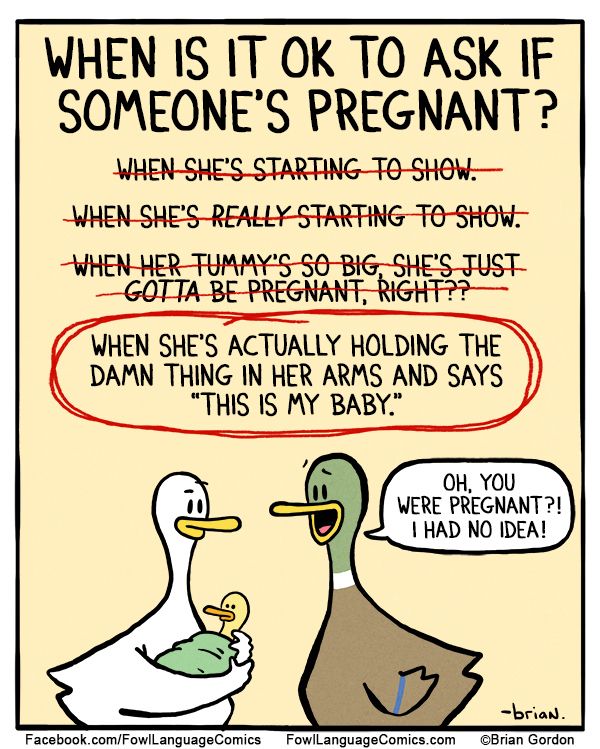Pregnancy and tennis
Mommy and Me: Playing While Pregnant
ADVERTISEMENT
In April, Serena Williams caught the world off guard when she revealed she was 20 weeks pregnant. What may have been most surprising of all was that it meant she won the Australian Open while roughly two months along.
“I was nervous. I didn’t know what to think,” the 35-year-old said in her April TED Talk. “I just knew that at that moment, it was important for me to just focus right there, at the Australian Open. … I really felt like I didn’t have time to deal with any extra emotions – any extra anything – because pregnant or not, no one knew, and I was supposed to win that tournament.”
Williams would win, beating her sister Venus in the final for her record 23rd Grand Slam title.
When the baby news broke on the Tennis Channel, Lindsay Davenport talked about how much respect everyone has for Williams playing – and winning – the Australian Open.
“Obviously she would have been in the early stages of pregnancy, but being able to come through there not only physically, but also emotionally, is pretty remarkable,” Davenport said.
ADVERTISEMENT
RELATED: Dr. Colvin's Benefits of Playing While Pregnant
There was a time when physicians discouraged pregnant women from exercising for fear it could harm the mother and fetus. Today, doctors believe the opposite is true.
“We encourage regular exercise,” said Alejandro Landa, M.D., an OB-GYN at Duke University Medical Center. “Whatever you were doing before your pregnancy, just keep doing it as long as your body allows it.”
The American College of Obstetricians and Gynecologists recommends that most pregnant women, in the absence of medical issues, get 30 minutes or more of moderate exercise a day.
“Mothers who are active during pregnancy tend to feel better physically and emotionally, and they gain less weight,” says Carol L.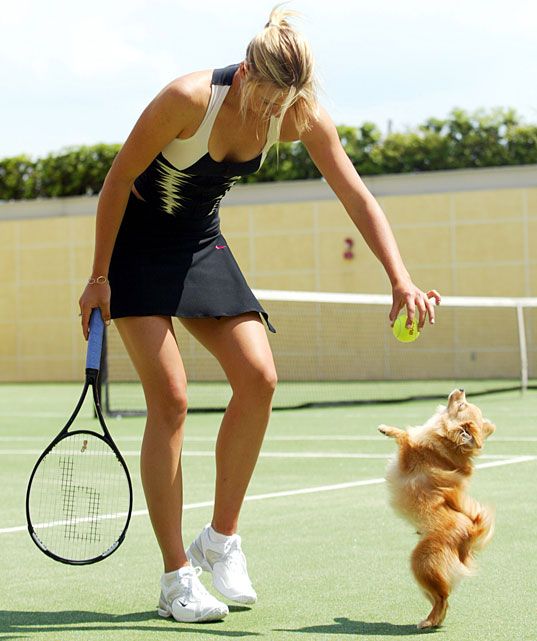 Otis, M.D., a women’s sports medicine physician in Los Angeles and former medical advisor for the WTA.
Otis, M.D., a women’s sports medicine physician in Los Angeles and former medical advisor for the WTA.
Regular exercise is also thought to ease labor, increase energy and endurance, speed recovery time after delivery and help women return to their pre-pregnancy weight sooner.
Click here for a clip of Serena hitting at 7 months pregnant
Former world No. 4 Mary Joe Fernandez said that playing while carrying her daughter Isabella helped her feel stronger off the court. Morning sickness curtailed her activity in the first trimester, but she recalls playing into her sixth month.
“My doctor recommended I stay fit, and tennis is my favorite form of exercise,” Fernandez said.
“What I tell most of my patients is don't start anything new during your pregnancy that you weren't doing before,” Landa says. “If you're used to playing tennis multiple times every week, that's fine to keep doing.”
Carling Bassett-Seguso, who reached No. 8 in 1985, had three of her five children during her career.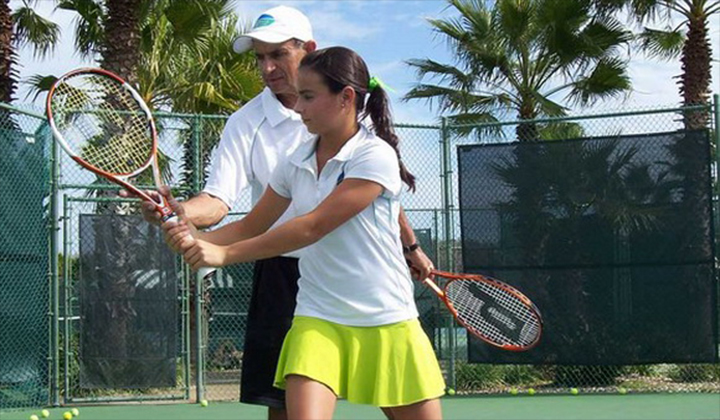 She was three months pregnant with her first child when she played the 1987 US Open.
She was three months pregnant with her first child when she played the 1987 US Open.
“When you're physically fit, it's not a big deal – you don't even feel it. I didn't,” Bassett-Seguso said. “I never stopped working out. I’m a big workout person anyway. … Do what makes you happy.”
There is one important caveat: Women need to get clearance from their doctor to play. After that, there are few on-court considerations:
Stay hydrated: It’s especially important to drink plenty of fluids when you’re expecting. “You want to stay hydrated,” Landa said. “Dehydration can cause cramping in your muscles, and it can cause cramping in your uterus that feel like contractions.”
Be cool: Avoid playing in strong sun, especially during the first trimester, when a developing fetus is vulnerable to heat.
Dress the part: Loose-fitting clothes and a sports bra can help you feel more comfortable. Your ligaments loosen as pregnancy progresses, making you more susceptible to ankle sprains, so be sure to have solid foot support. And because foot size often expands during pregnancy, you may need to change your tennis shoes.
And because foot size often expands during pregnancy, you may need to change your tennis shoes.
There are no hard and fast rules about when to stop playing, but as you get into your third trimester, take it down a notch – because your center of gravity will be altered after six months. Otis suggests you let the ball take extra bounces and avoid over-extending your body by hitting overheads or hard serves. Your body will let you know when you might be doing too much.
“A couple of times when I switched directions my belly went one way and the rest of me went the other,” Fernandez recalled, “but mostly, I felt great.”
Nina Pantic is a writer and contributor to Tennis magazine. For more, visit Tennis.com.
Additional reporting by Michelle Katlan
Are cycling and playing tennis safe in pregnancy?
In this article, we briefly discuss the safety precautions of some sporting activities, such as tennis, cycling, and athletics.
It is now advised that pregnant women should participate in moderate-intensity exercise for at least 150 minutes per week.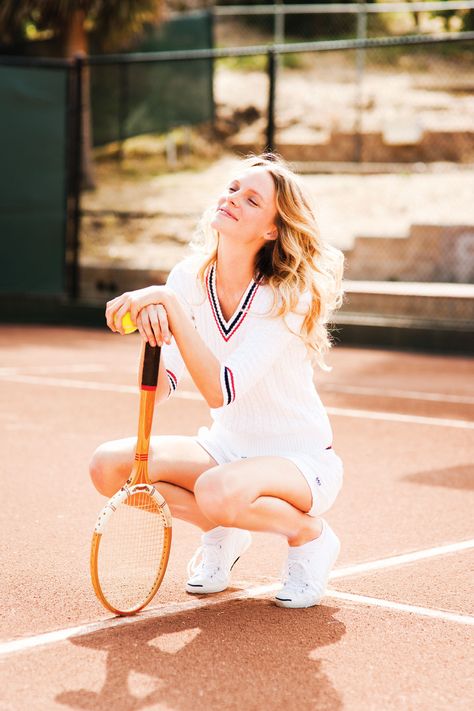 This could help in the following:
This could help in the following:
1. Decreasing the risk of depression by 25%,
2. Decreasing the risk of gestational diabetes and preeclampsia by 40%.
However, the American College of Obstetrician and Gynaecologists (ACOG) and the UK National Health Service (NHS) advise to avoid the following:
1. Contact sports that can cause injury to abdomen/ bump:
Examples include football, basketball, ice-hockey, boxing, rugby, tennis, squash, martial arts, kickboxing, judo.
2. Sports that cause fall/ injury:
Examples include horse riding, snow or water skiing, surfing, cycling, gymnastics
3. Sports that can cause decompression sickness/ air embolism, such as Scuba diving.
4. High altitude sports which can cause altitude sickness.
5. Exercise on lying back.
If you still choose to continue any of the other activities during pregnancy, then the following are strongly advisable:
1.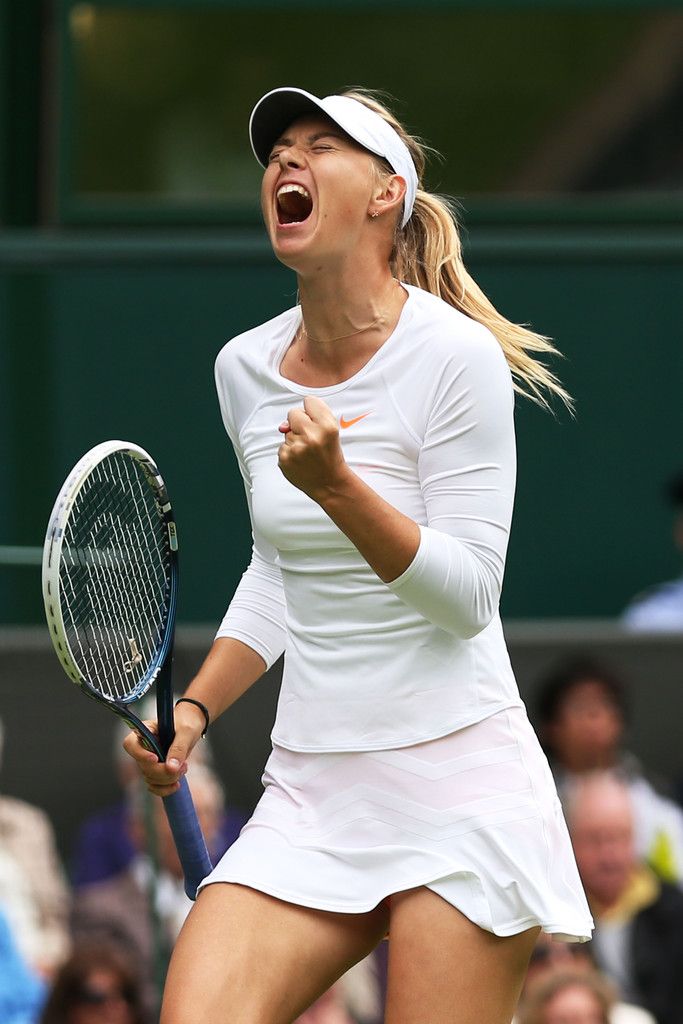 First of all, speak to your healthcare providers (midwife, doctor, obstetrician, etc.) to ensure it is safe for you.
First of all, speak to your healthcare providers (midwife, doctor, obstetrician, etc.) to ensure it is safe for you.
2. Inform your trainer/ coach/ instructor that you are pregnant.
3. Stay hydrated.
4. Avoid high core body temperature:
Avoid adverse weather conditions, especially too hot conditions. The body’s temperature regulation system undergoes significant changes during pregnancy. Therefore, you may develop overheating (‘hyperthermia’).
5. Warm-up and cool down.
6. Stop if you feel uncomfortable or unwell and before you become too tired/ exhausted.
7. Take adequate rest.
8. Ensure adequate clothing.
9. Be aware of the changes in your posture, balance, and gait during pregnancy.
10. It is advisable that you do not start the above sports the first time during pregnancy. You should only continue if you are a fully trained, skilled, and experienced and you have clearly understood the risks involved.
Some specific considerations are as follows:
(Please note that this information is for very fit, trained and experienced in these activities and participated regularly on high-intensity exercise before pregnancy)
TENNIS
1.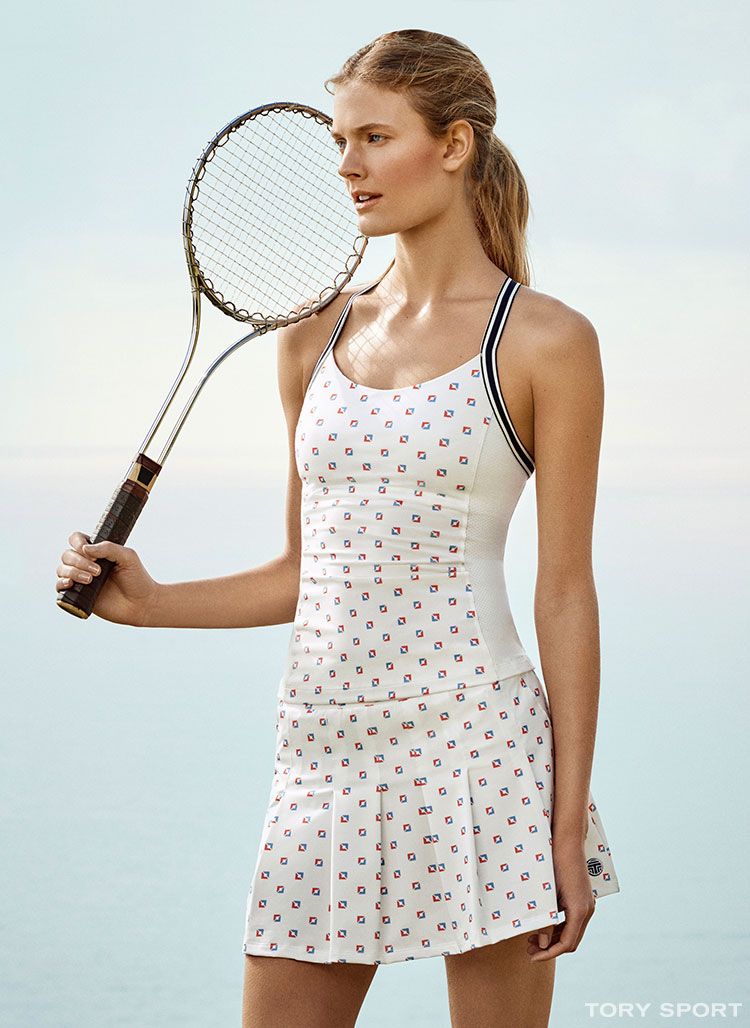 Appropriate clothing, such as sports bra/ extra supportive bra and loose-fitting sports clothes. You may try abdominal support if the movement of the bump causes discomfort.
Appropriate clothing, such as sports bra/ extra supportive bra and loose-fitting sports clothes. You may try abdominal support if the movement of the bump causes discomfort.
2. Good quality footwear will help to prevent ankle/ tendon injuries.
3. The size of the tennis shoes might need to change if you develop foot/ ankle swelling.
4. Avoid over-stretching your body such as during hard serves or hitting the ball overheads or chasing wide balls. You are more prone to lose your balance and fall and sustain an injury.
5. The intensity of the play might need to be modified. Therefore, adopt a common-sense approach.
6. Be very careful about the quick turns and fast movements as there are changes with posture and balance during pregnancy.
7. If you find covering the entire court uncomfortable during the Singles, you may consider playing in Doubles (especially during the third trimesters).
8. If you are playing outdoors, avoid very hot weather. Stay hydrated with frequent breaks to drink water.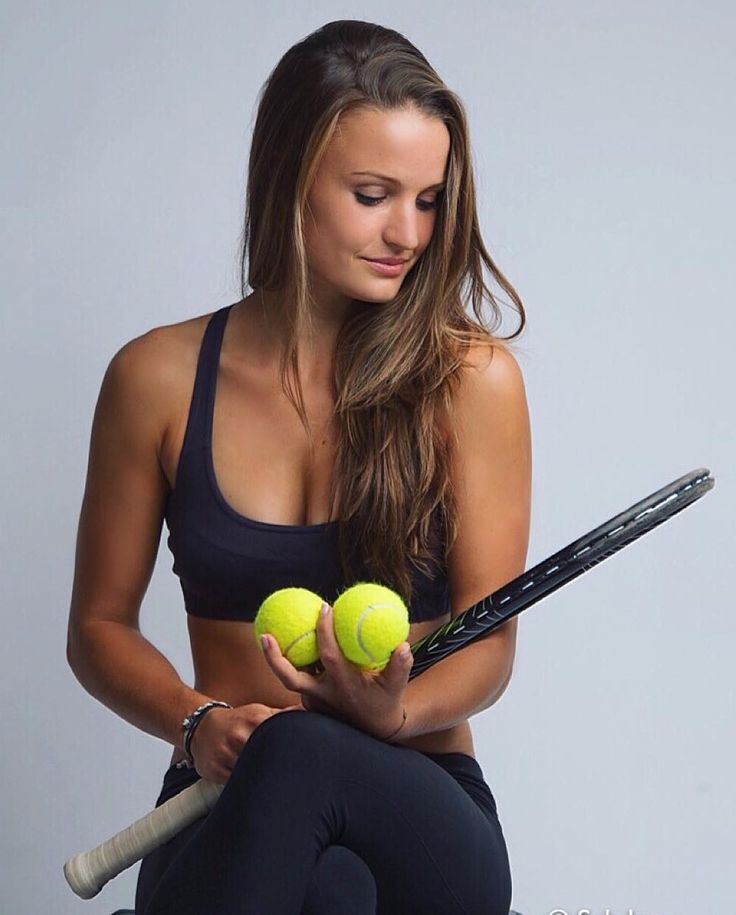 Use a hat or a visor might also help in the hot weather.
Use a hat or a visor might also help in the hot weather.
9. Do not take up tennis as a new sporting activity. Preferable avoid playing tennis if you are a beginner and still trying to learn/ develop the skills. Otherwise, you may increase the risk of fall and injury.
10. Apply your own judgment before you enroll and participate in competitive matches/ tournaments, avoid if possible.
11. Trauma to the bump with a tennis ball during second and third trimesters is an important risk. Always inform your opponent about your pregnancy and agree to avoid any overheads aimed towards your body.
12. After giving birth, start playing tennis gradually.
CYCLING (Off-Road)
1. Avoid fall and crash:
– Avoid cycling if it is raining or the roads are slippery to prevent fall.
– Learn about the changes in posture and balance during pregnancy.
– Take familiar and safer routes.
2. Avoid pressure on your back:
Raise the handlebars with an erg stem during the late second and third trimesters. This will help you to sit in a more upright posture therefore, avoid leaning forward and straining the back.
This will help you to sit in a more upright posture therefore, avoid leaning forward and straining the back.
3. Avoid overheating:
– avoid cycling in very hot weather.
– avoid long and strenuous journeys on the bike.
– Take breaks
4. Reduce the intensity of cycling and monitor the heart rate. The heart rate should stay below 140 beats per minute (as per the recommendations).
5. Stay hydrated.
6. May consider cycling indoors.
7. Have realistic expectations:
You might feel tired and exhausted easily during pregnancy or might have nausea or backache. So, you may not meet a planned workout sometimes. But do not get disheartened or stressed.
8. Static cycling is safe and should be encouraged.
9. Always listen to your body.
10. You may need to alter the position of the saddle as the pregnancy advances, to stay more comfortable
ATHLETICS
1. Use a maternity support belt and a supportive sports bra to minimise discomfort.
2. Reduce the intensity: most pregnant athletes report a reduction of intensity by 30-40%.
3. Avoid long-distance running, such as a marathon, if possible.
Nothing found for Sport Y Beremennost Osnovnye Pravyla %3Flang%3Dru
Cookies Policy Cookie policy
Use of cookies This website uses so-called cookies. Cookies are small files that are downloaded to your computer and help to ensure the normal and secure functioning of a website. They allow you to collect information about products that visitors to the site are interested in, and also take into account the navigation used during the visit. This is done in order to make our online offerings more beneficial to users. Institute of Cell Therapy LLC respects the privacy rights of website visitors and recognizes the importance of protecting their personal data. The analysis of information from the website is obtained on an anonymous basis.
When visiting this website, each visitor's Internet browser transmits certain information to the server of Institute of Cell Therapy LLC: date and time of visit, browser type, language settings, operating system.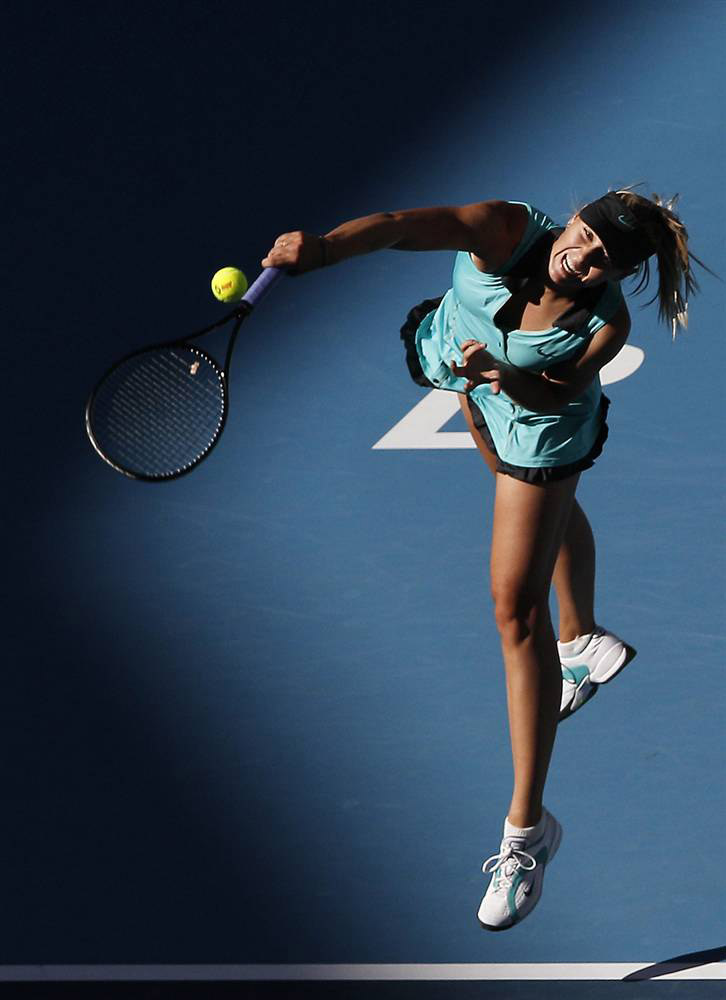 Information about how the site is used will not be linked to the full IP address. Our site has activated the IP anonymization function offered by Google, so the last 8 digits (IPv4 type) or the last 80 bits (IPv6 type) of your IP address are stripped. This information is stored in connection logs for a limited time to ensure the security and proper operation of the website, as well as to collect statistical information. We use two categories of cookies: (1) cookies that are necessary for technical purposes, without which the functionality of our site will be significantly reduced, and (2) optional cookies.
Information about how the site is used will not be linked to the full IP address. Our site has activated the IP anonymization function offered by Google, so the last 8 digits (IPv4 type) or the last 80 bits (IPv6 type) of your IP address are stripped. This information is stored in connection logs for a limited time to ensure the security and proper operation of the website, as well as to collect statistical information. We use two categories of cookies: (1) cookies that are necessary for technical purposes, without which the functionality of our site will be significantly reduced, and (2) optional cookies.
Web analysis
Our website uses Google Analytics, a website analysis service provided by Google Inc., 1600 Amphitheater Parkway, Mountain View, CA 94043, United States of America (Google). Based on your prior consent, Google will analyze your use of the website on our behalf. You can disable cookies at any time or set your web browser to warn you when you receive cookies.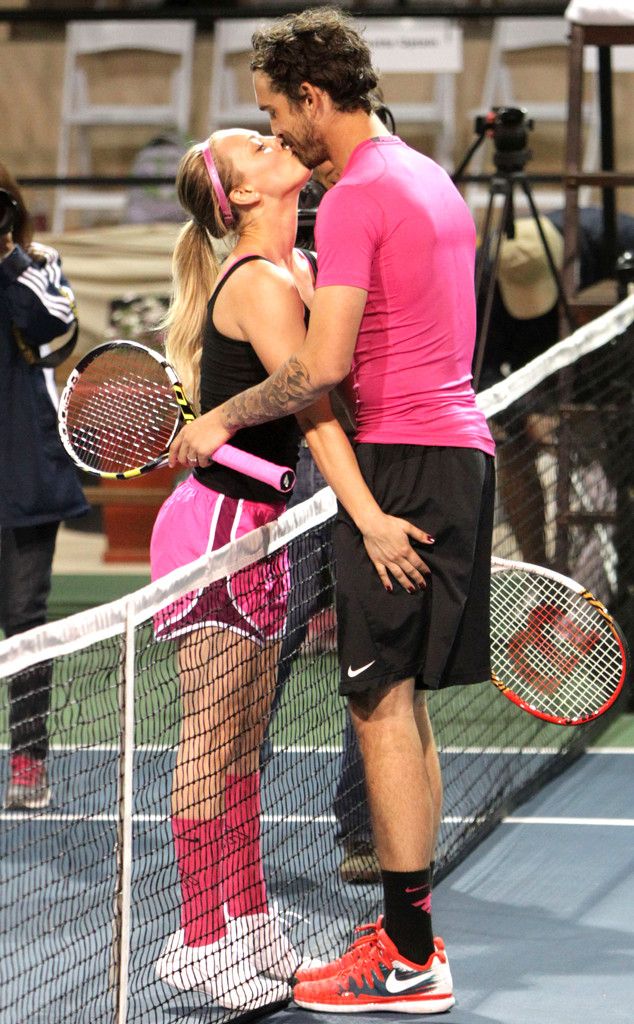 In order to do this, please select the desired option in the Optional Cookies table. However, if cookies are disabled, you may not be able to use all the features of this website.
In order to do this, please select the desired option in the Optional Cookies table. However, if cookies are disabled, you may not be able to use all the features of this website.
optional cookies
We use our own optional cookies on this website to help us understand how to make our services more attractive to visitors. Optional cookies help you find out how long you've been browsing a page or which pages you've visited. Technical cookies from other companies We also use technical cookies from other companies. These cookies help us recognize you on other companies' websites and display personalized content on those websites.
This site contains cookies for more manual work with it. The use of cookies allows TOV "Institute of Clinical Therapy" in the future functionality of this website.
Pressing the "PLEASE" button will allow you to select any cookies. You can click on your cookie selection and see more detailed information by clicking the left side Cookies policy
Playing tennis while pregnant
that the serve is the most important stroke in tennis?
The most important and technically difficult stroke in tennis is the serve, from which all ball rallies begin.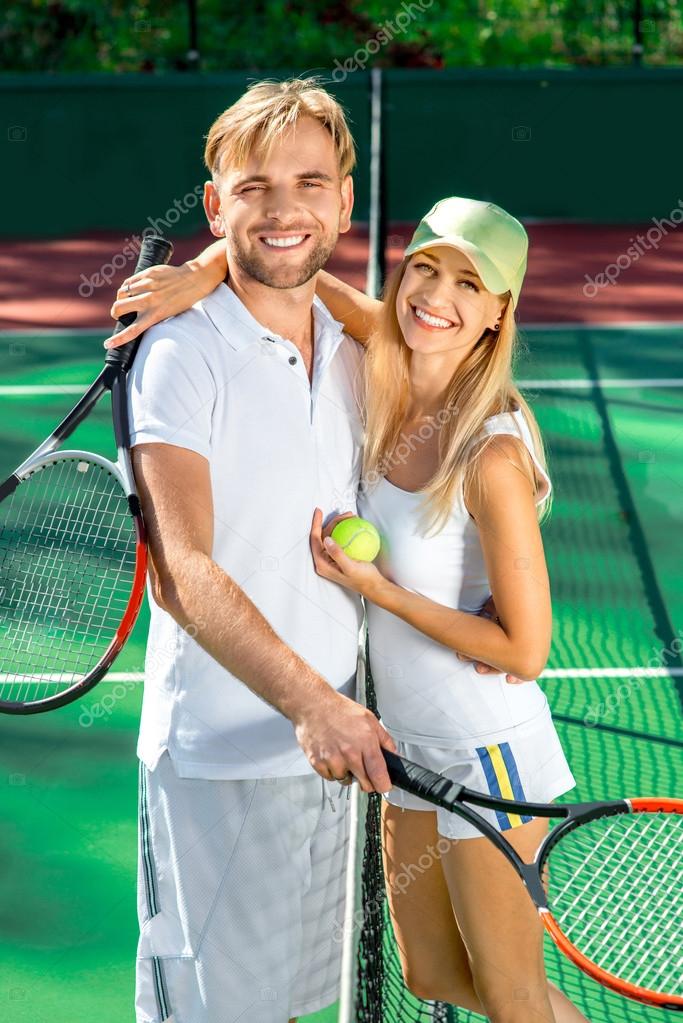 It requires maximum body coordination. With an accurate and fairly strong serve, you can immediately win a point. Two attempts are given for submission. You can put the ball into play with the help of: a twisted kick, a cut serve and a flat kick.
It requires maximum body coordination. With an accurate and fairly strong serve, you can immediately win a point. Two attempts are given for submission. You can put the ball into play with the help of: a twisted kick, a cut serve and a flat kick.
how much time is given for rest at the end of each set?
At the end of each set there is a 120 second break. The beginning of the break is counted from the moment the point is played until the ball is hit when the next point is played.
who is the youngest Grand Slam winner?
Swiss tennis player Martina Hingis is the youngest Grand Slam winner. In 1997, she won all four tournaments: US Open, Australian Open, Roland Garros, Wimbledon. At the time of victory in the last final match, she was 16 years old.
what place on the site is called the dead zone?
The area between the service line and the back court line is called dead because it is difficult to hit the opponent's shots in this place. It is convenient to make strikes from being closer to the net or at the back line of the court.
It is convenient to make strikes from being closer to the net or at the back line of the court.
When can the coach or captain give hints to a player or players?
Suggestions, advice or directions to a player or players may only be made after the end of a set or during a change of sides at the end of a game. During the change of sides after the first game of each set, during the tie-break and in any other periods of the match, hints to the player are prohibited.
what is the name of a high overhead racket hit?
A strong racquet hit high above the head is called a “smash”. Such a blow, as a rule, beats off an unsuccessful candle. If the mix is executed correctly, then the ball flies so high that the opponent has little chance of hitting it.
what is mixed tennis?
Mixed competitions are held according to the doubles rules. Each team consists of a man and a woman. Mixed teams participate in modern Grand Slam tournaments, the World TeamTennis professional league, in the International Team Hopman Cup. Mixed doubles was returned to the program of the Olympic Games in 2012.
Mixed doubles was returned to the program of the Olympic Games in 2012.
what tennis tournaments are held in Russia?
Russia hosts two tournaments for women and men: the Kremlin Cup and the St. Petersburg Open. The Kremlin Cup is held in autumn in Moscow on the hard courts of the Olimpiysky Sports Complex for both men and women. St. Petersburg Open takes place on the hard courts of the Sibur Arena complex in February WTA, and in September ATP.
How much fluid do tennis players lose through sweat per hour of play?
Studies have shown that professional tennis players lose 2.5 liters of fluid per hour during a game. That's why it's so important to replenish your water reserves to avoid dehydration. In each break, athletes drink up to 200 ml of water or other healthy drinks, and during the entire fight up to 5 liters.
how to choose a tennis racket?
Choosing a racket for a beginner tennis player is not an easy task. After all, the technique and style of the game will depend on this. It is better to buy a racket in specialized stores where there is a choice. Taking the racket in hand, you can feel whether the racket is suitable for weight, length and size of the handle, whether it is convenient to handle. If you have a coach, he will definitely tell you where you can buy a racket and help you pick it up.
After all, the technique and style of the game will depend on this. It is better to buy a racket in specialized stores where there is a choice. Taking the racket in hand, you can feel whether the racket is suitable for weight, length and size of the handle, whether it is convenient to handle. If you have a coach, he will definitely tell you where you can buy a racket and help you pick it up.
what are the duties of the chief referee during the tournament?
The chief referee in tennis is called the referee. He draws up the schedule of games, draws lots, appoints referees for matches, and determines the suitability of the venues for the game. The referee has the right to postpone or postpone matches, remove the player from the tournament, and in disputes that relate to the rules, make the final decision. The chief referee must be honest, principled and know the rules of the game perfectly.
that Marat Safin was the most emotional tennis player of his time?
In 2009, at the Hopman Cup in Perth (Australia), Marat Safin unsuccessfully received the serve of the Slovak Dominik Hrbaty.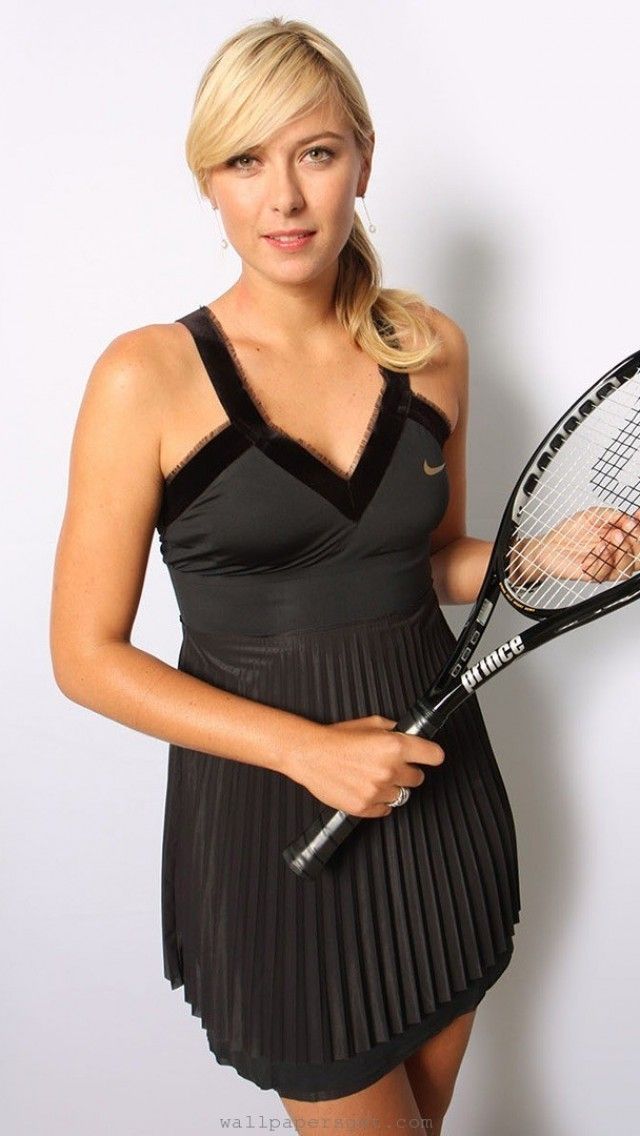 The ball that flew off the racket hit an elderly woman sitting by the net. Marat was not taken aback, ran up to her and kissed her. The audience was delighted with such an emotional act of Safin.
The ball that flew off the racket hit an elderly woman sitting by the net. Marat was not taken aback, ran up to her and kissed her. The audience was delighted with such an emotional act of Safin.
who is the most titled tennis player in Russia?
Evgeny Kafelnikov is the most titled tennis player in Russia, having won twenty-six tournaments in men's singles and twenty-seven tournaments in doubles. At 19In 96, Kafelnikov was the first Russian tennis player to win the Grand Slam tournament and become the first racket of the world, in 2000 he won the Olympic Games in Sydney. In 2002 he won the Davis Cup with the Russian national team. He retired in 2003 at the peak of his success and in excellent physical shape. In 2019, the name of Yevgeny Kafelnikov was included in the lists of the International Tennis Hall of Fame.
In what year was tennis included in the Olympic Games?
Men's tennis championships were included in the program of the Olympic Games in 1896 years in Athens.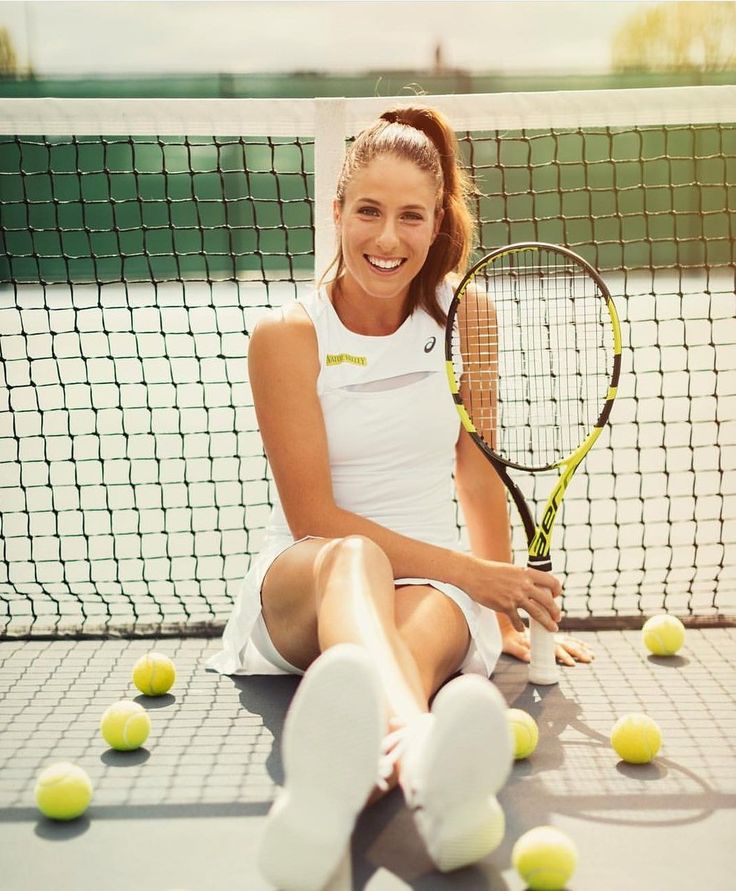 In 1900, women's disciplines were included at the Summer Olympics in Paris. In 1928, tennis, which had already become a popular sport, was excluded from the Olympics. And only in 1988 in Seoul, tennis was returned to the program of the ⅩⅩⅣ Olympic Games. In this sport, five sets of awards are played.
In 1900, women's disciplines were included at the Summer Olympics in Paris. In 1928, tennis, which had already become a popular sport, was excluded from the Olympics. And only in 1988 in Seoul, tennis was returned to the program of the ⅩⅩⅣ Olympic Games. In this sport, five sets of awards are played.
How is the winner of a tennis match determined?
A match may consist of three or five sets. In order to win in a three-set match, a player or a pair of players needs to win two sets, in a five-set match - three sets.
what is a fast court?
Fast court is a type of tennis court surface that provides a fast and low ball bounce. The fastest surface is grass. The Grand Slam Wimbledon is played on grass courts. In our time, grass surfaces are losing ground due to the fact that playing on them requires serious preparation from the athlete and, moreover, they are expensive to maintain. Grass is being replaced by an acrylic surface - hard, which hosts two Grand Slam tournaments - the US Open and the Australian Open.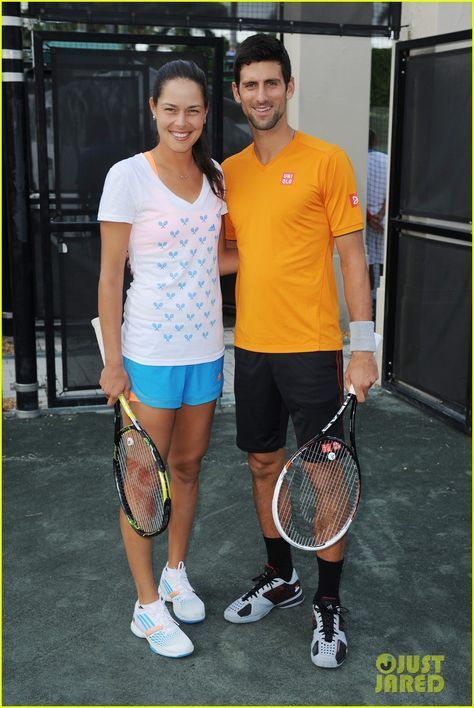
Which of the Russian tennis players is in the top 10 of the ATP rankings?
In the updated rating of the Association of Tennis Professionals (ATP), Russia became the only country, two representatives of which entered the top 10. They are Daniil Medvedev, who is in sixth place, and Andrey Rublev, who is in tenth place.
what is an ace in tennis?
An ace in tennis is a serve that hits the corner of a square and the receiving player fails to return it. If a player touches the ball with a racket, and the ball flies into touch, such a serve is not considered an ace. A high score from aces indicates that the server is professional or that the receiver is not in the best shape.
what is the NTRP rating?
The National Tennis Rating Program (NTRP) is a technique developed in the United States that allows you to assess your level of skill in tennis, monitor the dynamics of its growth, and also choose a partner to play. The system is used all over the world and has a division from 1.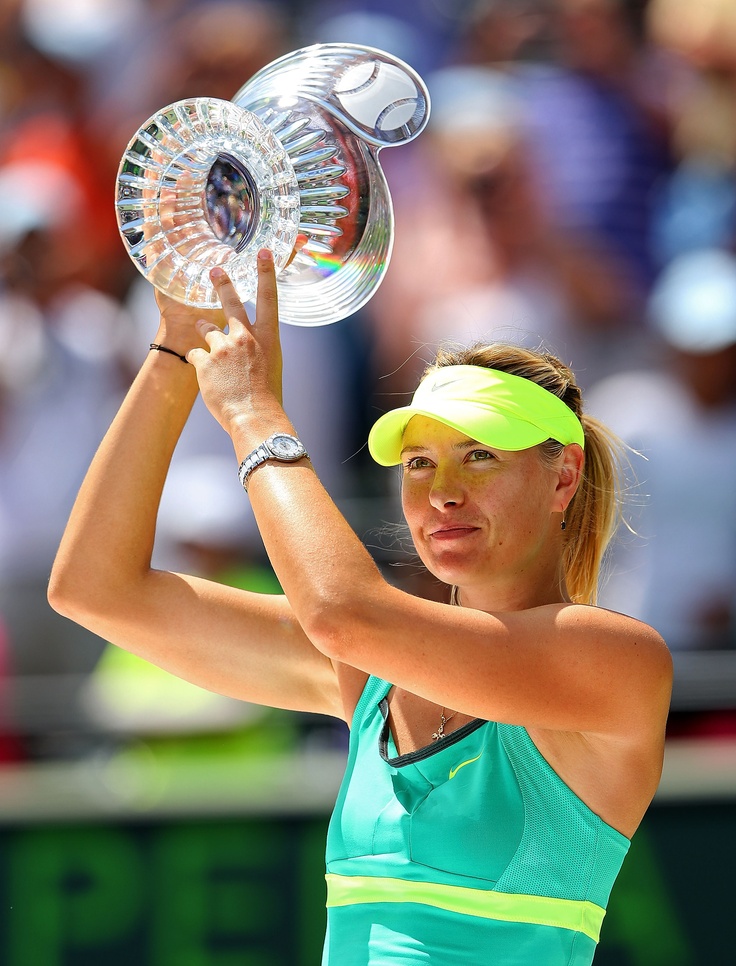 0 to 7.0, where 1.0 is entry-level and 7.0 is world-class professionalism.
0 to 7.0, where 1.0 is entry-level and 7.0 is world-class professionalism.
What is a vibration damper for?
Vibration damper is needed to dampen the vibrations generated when the racket comes into contact with the ball. If the vibrations are not damped, they are transmitted to the arm and have a negative effect on the elbow and shoulder joints. A vibration damper is installed under the lower horizontal string and is a plastic or rubber nozzle. The shape is different round, triangular, square and other.
Where is the Russian Tennis Hall of Fame located?
The Russian Tennis Hall of Fame was established on October 27, 2002 in St. Petersburg, in the office of the St. Petersburg Open. The initiators and active participants of this event were: journalist Zairbek Mansurov, tournament director Mikhail Rydnikov and the author of the award statuette, designer David Avakyan. The gallery of the Hall exhibits portraits and copies of diplomas of Russian tennis laureates, such as: Alexander Metreveli, Evgeny Kafelnikov, Shamil Tarpischev and more than four dozen other outstanding tennis players. Perhaps the Hall will be the beginning of the creation of a museum of Russian tennis. In 2006, he was moved to Moscow, to the NTV + Sport studio, where the awards ceremony is now held.
Perhaps the Hall will be the beginning of the creation of a museum of Russian tennis. In 2006, he was moved to Moscow, to the NTV + Sport studio, where the awards ceremony is now held.
that Maria Sharapova is officially recognized as the loudest tennis player on the planet?
Maria Sharapova had a special style of play. Each of her blows was accompanied by a loud scream, which simply pissed off rivals and fans. Sometimes the screams reached the level of 105 decibels, which is comparable to the rumble of an airplane taking off. With the help of a cry, Maria was taught from childhood to inhale sharply and invest more in the blow. It should be noted that in addition to the loud accompaniment of her game, Maria Sharapova played equally well with her left and right hand, and this also helped her on the court.
what contributes to the development of tennis in Russia?
Construction of courts, opening of new tennis halls and academies, for example: Tennis Academy in the Olympic Park in Sochi, Ural Tennis Academy in Yekaterinburg, hosting international tournaments such as the Kremlin Cup, St.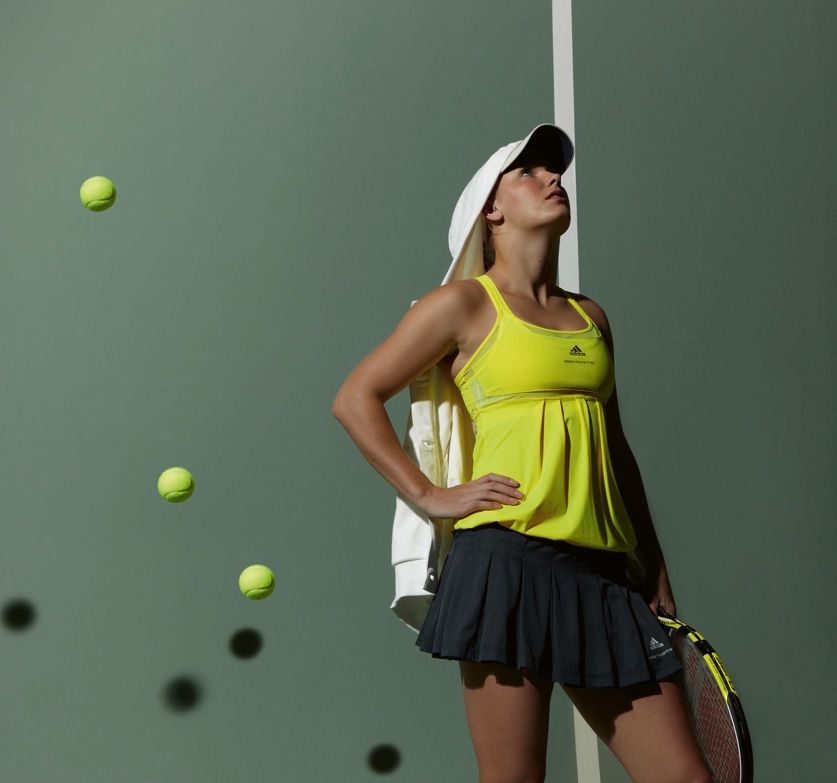 -Petersburg Open, Davis Cup matches and Federation Cup in Russian cities: Vladivostok, Novy Urengoy, Irkutsk, as well as the publication of the Tennis + magazine (1992 - 2009), Tennis Weekend (since 2006), the broadcast of the Tennis television channel on NTV +, the publication of the encyclopedic , reference, educational literature and much more contributes to the development of tennis in Russia.
-Petersburg Open, Davis Cup matches and Federation Cup in Russian cities: Vladivostok, Novy Urengoy, Irkutsk, as well as the publication of the Tennis + magazine (1992 - 2009), Tennis Weekend (since 2006), the broadcast of the Tennis television channel on NTV +, the publication of the encyclopedic , reference, educational literature and much more contributes to the development of tennis in Russia.
what does a double fault mean in tennis?
In order to put the ball into play, the tennis player is given two attempts. If both serves are not successful, for example: the ball hit the net or out of bounds, then the referee announces a double fault, and a point is awarded to the player receiving the ball. Even professional tennis players make double faults. The record belongs to the Spaniard Fernando Verdasco, on whose account, 4800 double faults.
where is the highest tennis court in the world located?
The highest tennis court in the world, listed in the Guinness Book of Records, is located in Dubai. It is located on the top floors of the luxurious seven-star Burj Al Arab hotel. The area of the court is 415 m² and its height is 211 m above sea level. The court has a round shape, and when there are no fights on it, it is used as a helipad for hotel residents.
What makes American tennis player Renee Richards unique?
American Renee Richards is the only tennis player in the history of tennis who took part in official competitions, first in the men's, and after the change of sex in the women's category. At 19In 1977, she became a finalist at the US Open, and in 1979 she took the twentieth place in the WTA rankings.
How does the change of serve take place during a game of tennis and when does the change of sides take place?
The right to serve the ball in the first game is determined by lot. In the second game, the players change. The receiver becomes the server, and his points are announced first.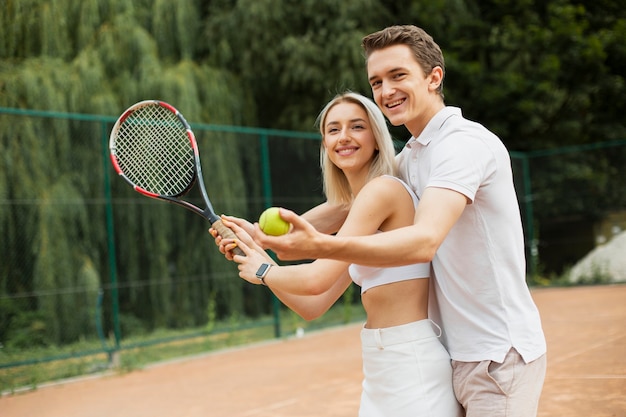 The game begins with a serve to the right of the receiving square. The ball is served diagonally. Then the player serves to the left square, etc. For each serve, the player is given two attempts.
The game begins with a serve to the right of the receiving square. The ball is served diagonally. Then the player serves to the left square, etc. For each serve, the player is given two attempts.
After the end of the first, third and each subsequent odd game, as well as at the end of each set, if the total number of games in it is not even, the players change sides. If the number of games in a set is even, the players switch ends at the end of the first game of the next set.
who is a ballboy?
A ballboy is a boy or girl who helps players on the court during competitions. They collect the out-of-bounds balls and pass them to the serving players. For many children, this is a pass to professional tennis. At competitions, they meet their idols, watch the game, learn the basics of the game and gain experience.
who invented playing clay?
Grass courts wear out from frequent games, and from the scorching sun they dry out and become unusable.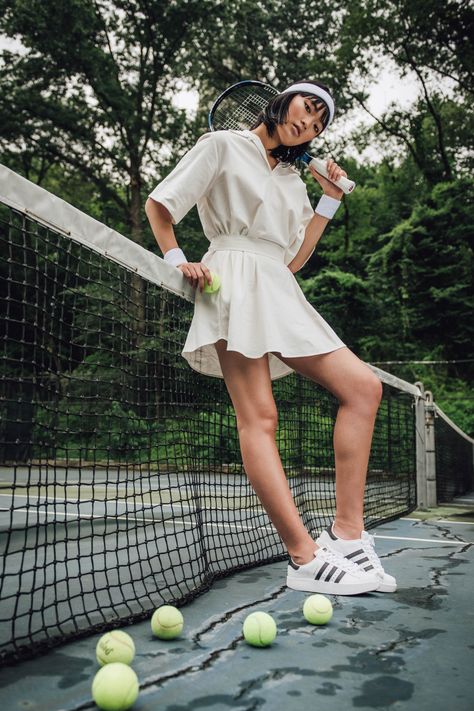 This problem was solved by the multiple winners of Wimbledon brothers William and Ernest Renshaw. Resting in Cannes and playing there on the grass court, the brothers decided to sprinkle the burnt grass with powdered ceramics. Defective clay pots were taken in the city of Vallauris, where pottery was developed. So a new type of coating appeared, which began to be used in hot climates.
This problem was solved by the multiple winners of Wimbledon brothers William and Ernest Renshaw. Resting in Cannes and playing there on the grass court, the brothers decided to sprinkle the burnt grass with powdered ceramics. Defective clay pots were taken in the city of Vallauris, where pottery was developed. So a new type of coating appeared, which began to be used in hot climates.
Where is the Roland Garros Grand Slam held?
The famous Roland Garros Grand Slam tournament is held every year in Paris on the open clay courts of the Roland Garros tennis complex. Competitions begin in late May - early June and last for two weeks. Winners in nine categories are revealed at the tournament: in five - for adults, in four - for senior juniors.
What are tennis accessories?
Basic Tennis Accessories:
Balancers are lead weights that are mounted on the rim of the racket and thereby change its weight and balance. Thanks to this, the athlete achieves the necessary playing properties of the racket. Available in the form of tapes or plates with a self-adhesive surface.
Available in the form of tapes or plates with a self-adhesive surface.
Vibration dampers are rubber or soft plastic devices that are mounted on the string surface of the racket and reduce vibrations. There are point and tape.
String pads are special round plastic plates with a diameter of two or three millimeters, which are installed between the strings at their intersections and increase the friction force between the longitudinal and transverse strings.
Protective tapes are glued to the top of the rim and thus protect the racket from damage that occurs when it comes into contact with the surface of the court. They have a self-adhesive surface.
Grips or handle wraps. There are two types of flu: basic and additional (overflu). Additional ones are installed on top of the base ones and protect them from damage. The outer side of the flu can have a different surface: smooth, rough, corrugated and others. This reduces the slip of the racket handle in your hand and allows you to use the racket in any weather.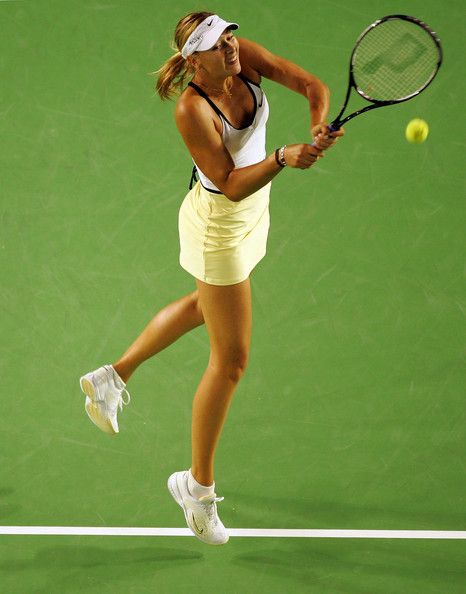
that bananas are the main food of tennis players?
Bananas are the main food of tennis players, because they contain a balanced amount of fast carbohydrates, potassium, magnesium, vitamin B4. Athletes eat bananas between games, and eat up to five bananas per game. During Wimbledon, five tons of these yellow, delicious fruits are consumed, which replenish the energy reserves of athletes, help avoid cramps, protect the heart, and help calm down.
which square is served when the score is 15/15, 30/30, 40/40?
There are two serving squares on the playing court. The first square is to the left of the serving player, and the second is to the right. At the beginning of the game and with an even score: 15/15, 30/30, 40/40 the ball is always served in the first square. With an odd score, the ball is introduced into the second square.
who is the overall Grand Slam winner?
In one year, Andre Agassi, Martin Navratilov, Serena Williams and Maria Sharapova managed to collect all four cups and become the absolute winner of the Grand Slam.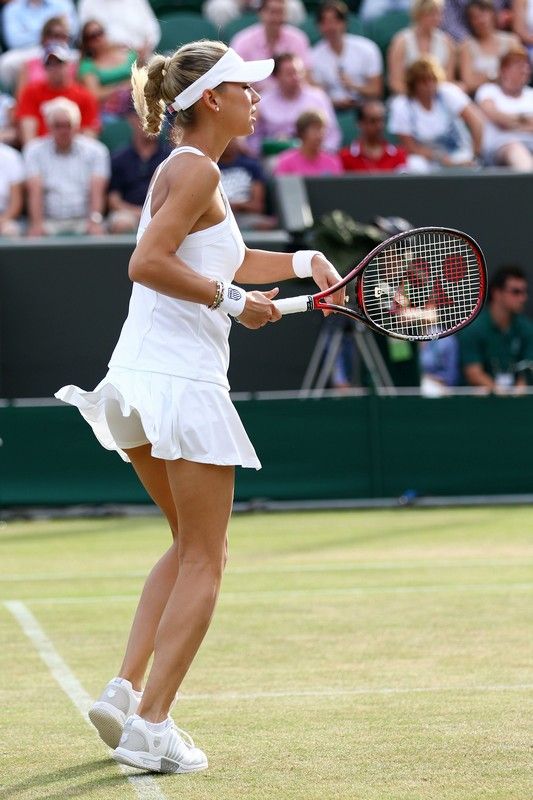 Such a victory is called a “career” Grand Slam.
Such a victory is called a “career” Grand Slam.
The “Golden” Grand Slam is given to those who, in addition to four cups, were able to win in the Olympic Games. The recipients of this award are: Steffi Graf (1988), Andre Agassi (1999), Rafael Nadal (2010), Serena Williams (2012).
how long was the longest tennis match?
Tennis players Simon Münzinger and Cyril Kammermann from Switzerland in 2007 in Derendigen (Switzerland) played 56 sets without a break and broke the world record for the longest match. The game lasted 26 hours and 15 minutes.
But the longest match at the Grand Slam tournament took place in 2010. The game between Nicolas Mayut and John Isner lasted 11 hours, 5 minutes and stretched over three days. Several other records were set in the game, for example, the record for the number of games played and aces completed.
who is the most titled tennis player in the world?
Australian Margaret Court has won Grand Slam tournaments twenty-four times in her career.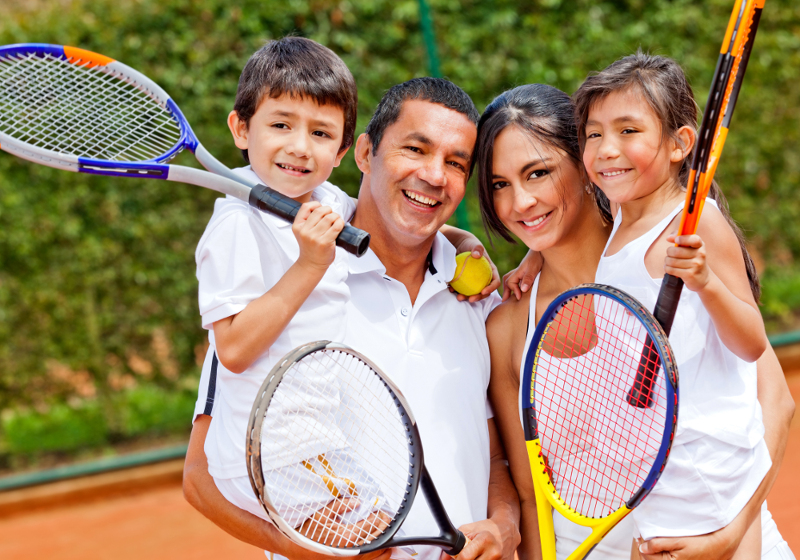 Among women, she is considered the most titled tennis player.
Among women, she is considered the most titled tennis player.
Swiss Roger Federer is considered the most titled among men, who has won 20 Grand Slams, 8 Wimbledon, 6 Australian Open, 5 US Open.
from what moment and where did the tournament history of tennis begin?
The first official tennis tournament was hosted by the English Wimbledon Tennis and Croquet Club in 1977. It is believed that from that moment the tournament history of tennis began. At the thirtieth Olympic Games in 2012 in London, the tennis tournament was again held on the courts of Wimbledon. In this suburb of London, the history of tennis began and continues to this day.
the main feature of the ground cover?
Ground coating is considered to be slow, and this is its main distinguishing feature from other types of coatings. Clay absorbs the force of impact, the ball bounces slowly and high. The athlete manages to run under the blow and send the ball back with force. Success on unpaved surfaces depends on leg strength, stamina and hard punches that break through the opponent.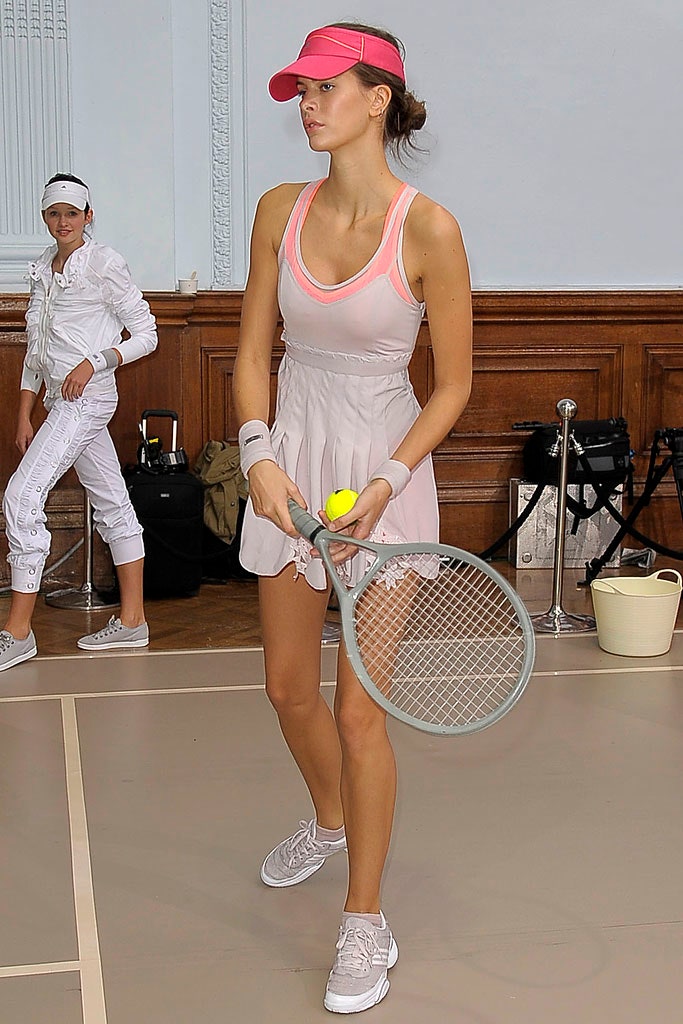
the only difference between a singles court and a doubles court?
The width of the court for singles is 8.23 m and for doubles it is 10.97 m. This is the only difference, the other dimensions of the courts are the same. The distance between the outer sidelines for a doubles game and the inner ones for a singles game is called the corridor, the ball hitting which is considered a hit for the doubles, and for singles it is an out.
what is a step?
An overstep is a tennis player's error in putting the ball into play when he oversteps the backline or crosses the imaginary extensions of the sideline or center line. If such a violation was recorded by the linesmen during the first serve, then the player is given a second attempt. A foul during the second serve means the loss of a point.
where do the balls go?
Approximately 300 million balls are produced every year in the world, after the wear of which approximately 15 thousand tons of waste remains.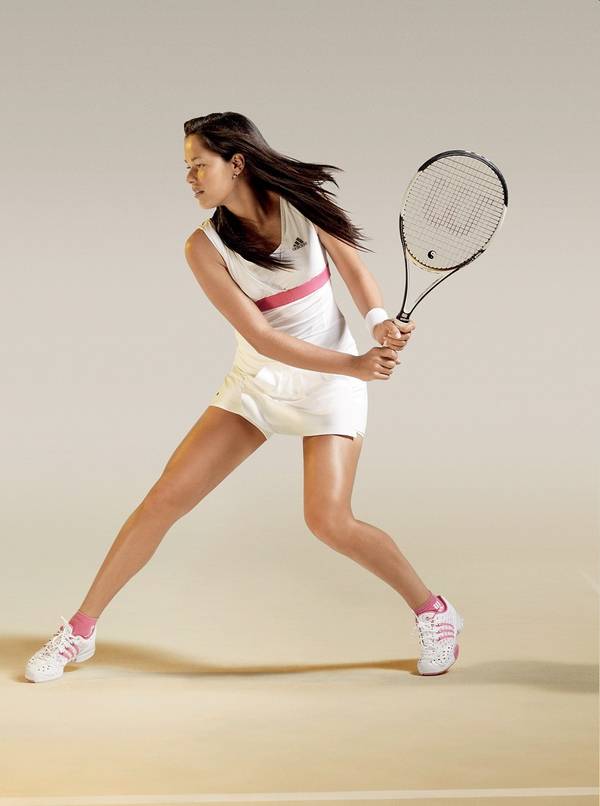 Balls made of rubber do not decompose well in the soil. In order not to pollute the environment, in the USA, for example, balls left after tournaments are restored and donated to tennis organizations. But in England, used balls have found an original use - they become a home for field mice.
Balls made of rubber do not decompose well in the soil. In order not to pollute the environment, in the USA, for example, balls left after tournaments are restored and donated to tennis organizations. But in England, used balls have found an original use - they become a home for field mice.
that there are two types of balls - "Standard" and "Extra"?
"Standard" are suitable for clay and indoor courts, as they have a not very dense pile. "Extra" are more often used on hard surfaces. Their pile is thicker and longer, which slows down the speed of their flight and rebound.
what kind of court surfaces are there?
The main types of tennis court surfaces used in official competitions are: hard (hard), clay, grass, synthetic (carpet). The type of coverage affects the speed of the ball rebound and the pace of the game of tennis players. Therefore, the match strategy on each surface is different.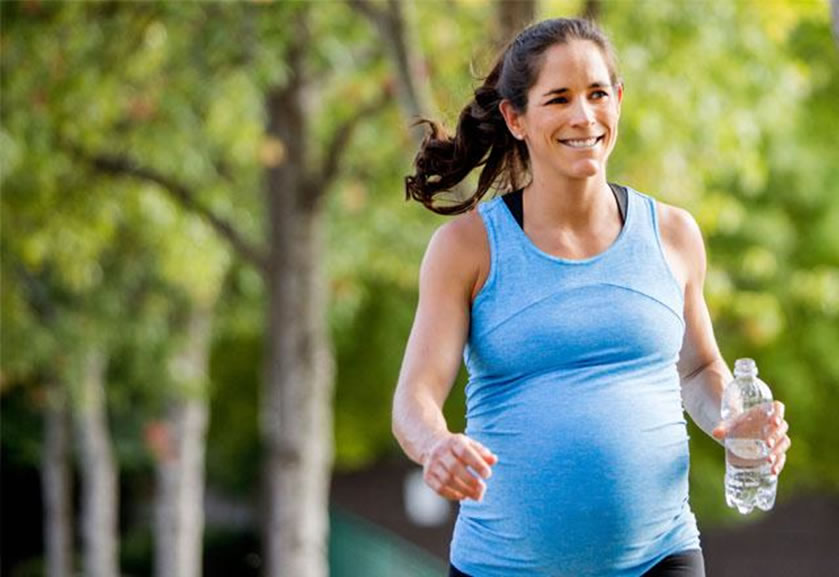
why do they wear white on the court?
The first tennis players were English aristocrats who were lovers of white clothes. Entering the tennis court in colored clothes was considered an unacceptable act. This tradition continued for many years. And today, on the court of Wimbledon, unlike other Grand Slam tournaments, the dress code prescribes to go out only in white.
what rustles inside a tennis ball?
Sometimes you can hear the rustle inside the tennis ball. These are rustling salt crystals, which are formed by the interaction of sodium nitrate and ammonia. These two tablet-like components are placed between the rubber halves of the core before it is glued together. When heated, the substances that reacted form nitrogen, water vapor and table salt. Nitrogen and water vapor burst the ball from the inside, and salt crystals rustle inside if the ball is gently shaken near the ear.
what is inside a tennis ball?
The game characteristics of the ball depend on the thickness of the core and its filling. Tennis balls fall into two categories: pressurized and non-pressurized.
Tennis balls fall into two categories: pressurized and non-pressurized.
Pressurized balls are filled with an inert gas which provides a high pressure inside the core. This increases the height of the ball bounce. But these balls are not durable. The gas eventually escapes through the thin shell of the core and the dynamic properties of the ball deteriorate. Such balls have to be replaced with new ones. Balls under pressure are played by professional players.
Unpressurized tennis balls filled with air. The walls of the core are much thicker than balls with pressure, since only this indicator affects the rebound of the ball. These balls have a long service life, but the dynamic performance is reduced. These balls are suitable for training and for playing beginner tennis players.
what kind of racket grips are there?
An important element of tennis technique is the grip of the racket, which allows you to strike accurately and efficiently. There are about ten varieties of grip, but the main ones are: eastern, western and continental. The difference between grips lies in the position of the tennis player's palm relative to the racquet handle.
There are about ten varieties of grip, but the main ones are: eastern, western and continental. The difference between grips lies in the position of the tennis player's palm relative to the racquet handle.
With a continental grip, the tennis player's palm is above the handle. This grip is used when serving, receiving a candle, hitting a rally, when receiving balls with a high rebound.
With a western grip, the palm is under the handle. It is used when hitting with strong rotation, when playing on clay surfaces and when receiving balls with a high rebound.
Eastern grip in modern tennis is considered the most common. From it, as a rule, beginners begin to master the technique of playing. The palm in this grip is behind the handle. It is used when receiving a serve, when hitting low and medium balls from the left.
main strokes used by tennis players?
Modern tennis players use a variety of ball strokes that differ in technique, ball trajectory and other key points.
Serve - every tennis rally begins with a serve.
Forehand - hit after the ball bounces off the ground. It is performed with the right hand, which is played by most tennis players.
Backhand - attacking left hand.
Volleyball - an attacking shot, which is carried out, as a rule, at a short distance from the net.
Smash - hitting a high-flying ball from top to bottom. It is performed at a small distance from the grid and hits where the player intended.
Slice (slashed blow) - a defensive blow that is applied along the trajectory forward and down.
Candle - a difficult upward arcing stroke. It is used both in attack and in defense.
Sweeping Shot - An attacking hit aimed at an empty corner of the court so that the opponent cannot reach the ball with the racket.
Cross - a strike directed diagonally.
When must players change sides without rest?
Players change ends without rest after the first game of each set and during the tie-break after every six points played.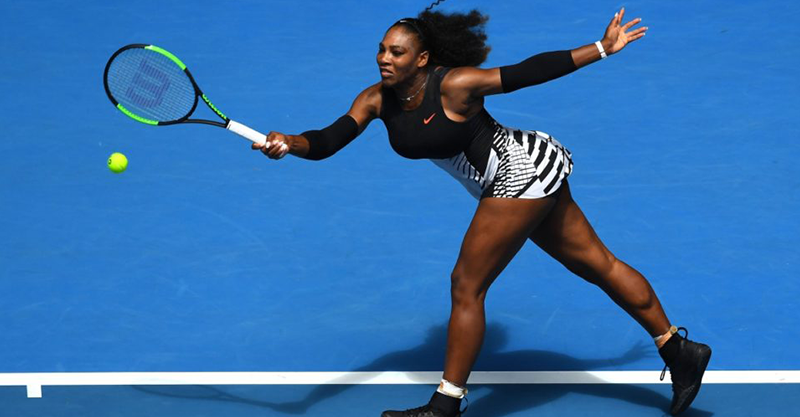
which tennis match is considered the most unique?
For the first time in the history of tennis, a unique water match was played between Rafael Nadal and Roger Federer. They played on a floating court in the bay near the city of Doha (Qatar). Nadal later said that it was an interesting and enjoyable game.
why is there such a strange score in tennis?
According to the rules of tennis, the net is sixty paces from the server. The player who won the pitch approached the opponent fifteen steps to make the next throw. And in order not to come close to the net with the third scored point, the player took not fifteen, but ten steps. Perhaps the reason for the strange score lies in this: with the first point - fifteen steps to the net, with the second - thirty, with the third - forty.
There is also a second version of the strange count associated with the hands on the clock. Having earned a point, tennis players moved the hands to a quarter of an hour.
Why is it good for children with vision problems to play tennis?
Tennis is one of the most beneficial sports for children. And for children with vision problems - especially. During the game, attention is constantly focused on the ball, which is either far, then close, or generally changes direction. Playing the child trains not only the muscles of the body, but also the muscles of the eyes. This keeps the vision in good shape. Ophthalmologists recommend playing tennis for children with vision problems.
who is the leader in broken rackets?
A bright Soviet tennis player Marat Safin broke a great many rackets during his twelve years of career. It's impossible to calculate exactly how many. Quite often, failures on the court were accompanied by swearing at oneself and beating rackets on the court. Due to the unbalanced nature, the athlete is considered the clear leader in broken rackets.
that every match starts with a warm-up?
The match begins with a pre-match warm-up, which lasts up to ten minutes and allows the tennis player to get used to the surface, the bounce of the ball and tune in to the game. During the warm-up, strikes are practiced: from the left, right, from the summer, diagonally, serve, and also attention is drawn to the strengths and weaknesses of the enemy, his strength is evaluated. During the game, this will help to achieve success.
During the warm-up, strikes are practiced: from the left, right, from the summer, diagonally, serve, and also attention is drawn to the strengths and weaknesses of the enemy, his strength is evaluated. During the game, this will help to achieve success.
who are the tallest tennis players?
Croatian tennis player Ivo Karlovic and American Riley Opelka are the tallest tennis players in the world. Their height is 211 cm.
The Czech Eva Grdinova, whose height is 191 cm, was recognized as the tallest tennis player.
At what age is it better to start playing tennis?
You can start practicing from the age of three. At this age, children hone their coordination and reactions by doing simple exercises with a ball and racket, such as rolling balls with a racket in one line, running along a coordination ladder lying on the floor, or throwing balls against a wall and picking up scattered balls on a racket.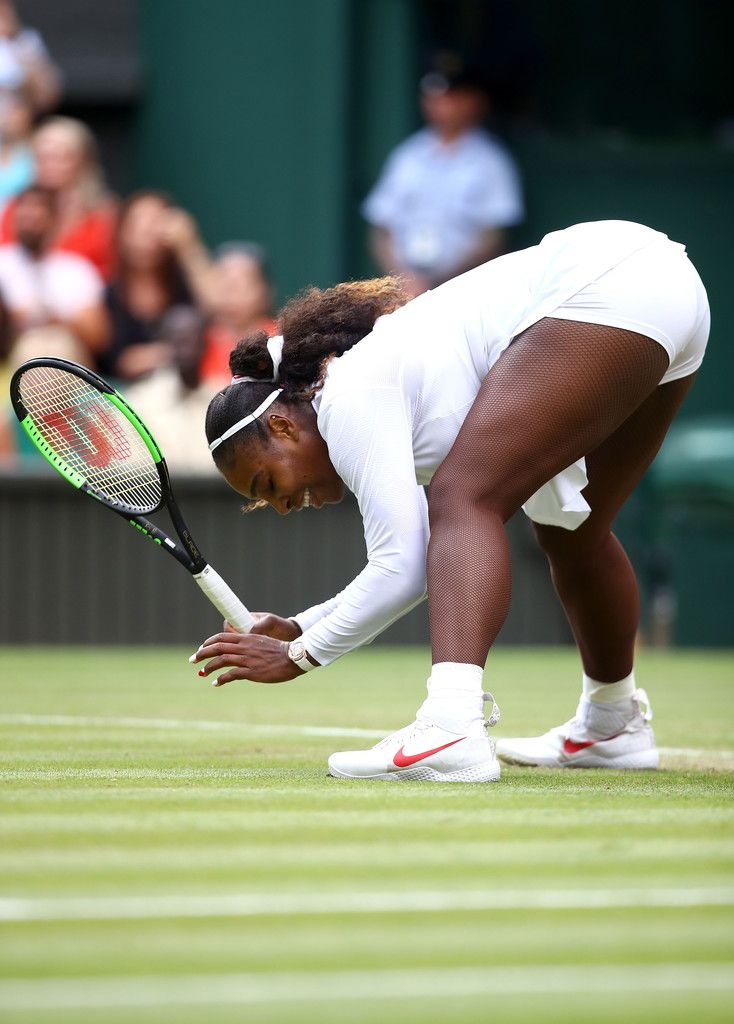 From 4 to 6 years old, children are given the technique of impact. Particular attention is paid to physical exercises that develop attention, dexterity, and flexibility. The sooner you start exercising, the more likely you are to succeed.
From 4 to 6 years old, children are given the technique of impact. Particular attention is paid to physical exercises that develop attention, dexterity, and flexibility. The sooner you start exercising, the more likely you are to succeed.
Adults who start playing from scratch learn the basics of the game faster, but physical fitness, coordination and reaction deteriorate with age. Keep in mind that the average age of players is 24 - 30 years. If you do not set yourself the goal of becoming a professional, then you can start playing tennis at any age.
what a curious incident happened to Rafael Nadal at Wimbledon in 2017?
Spanish tennis player Rafael Nadal in 2017, before the match of the fourth round of Wimbledon, while waiting to enter the court with the Luxembourger Gilles Muller, decided to stretch his muscles, but chose the wrong place for this. Jumping up sharply, he hit his head hard on the jamb of the doorway in which he was..jpg)

